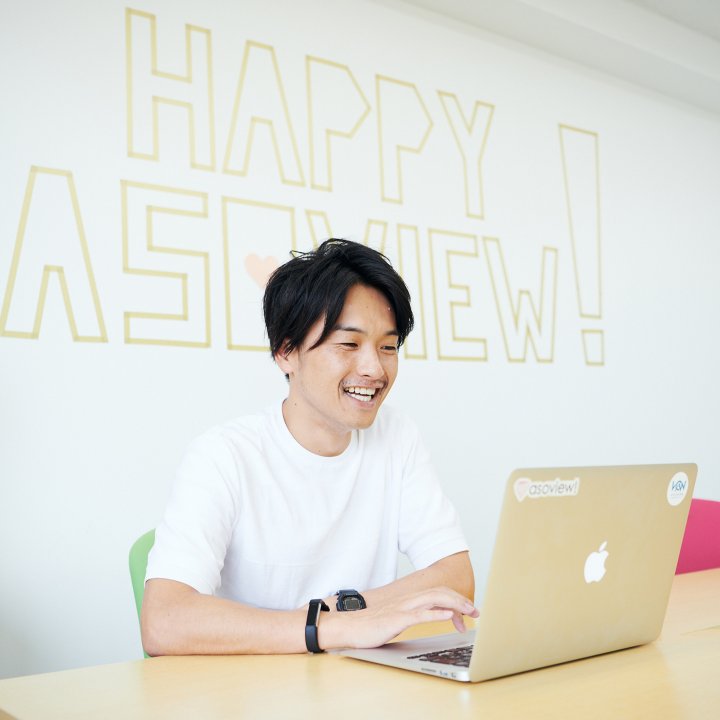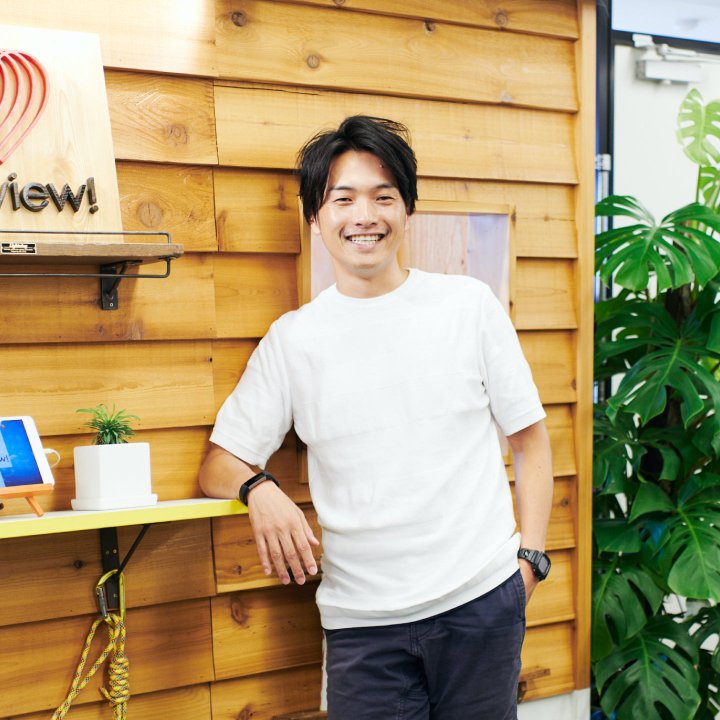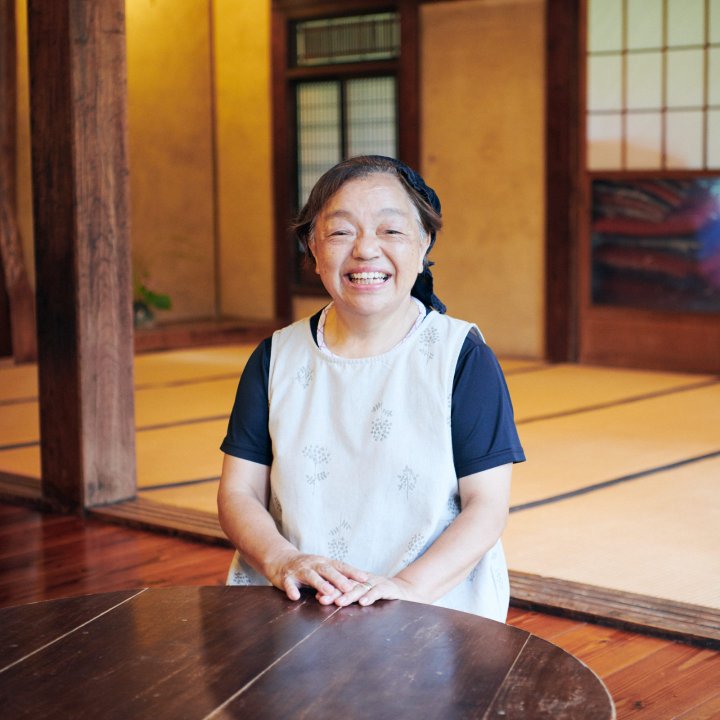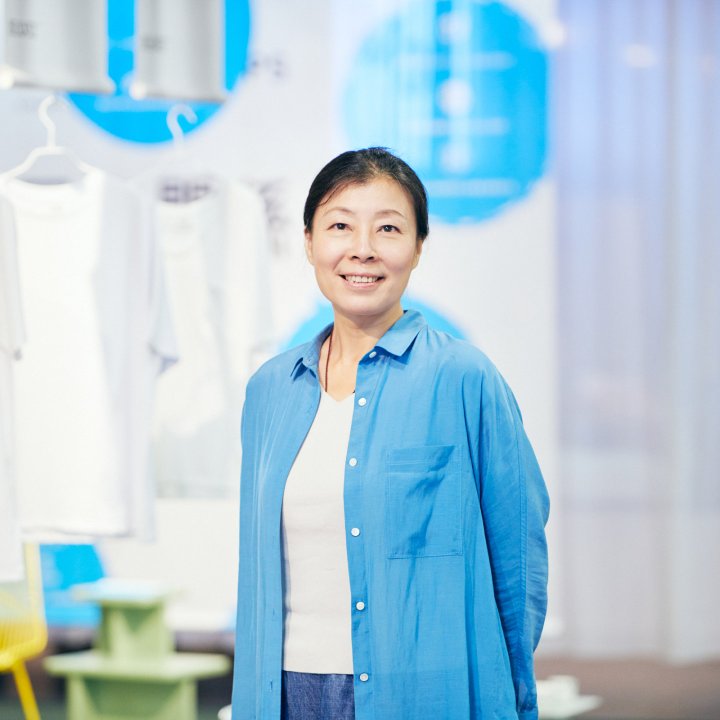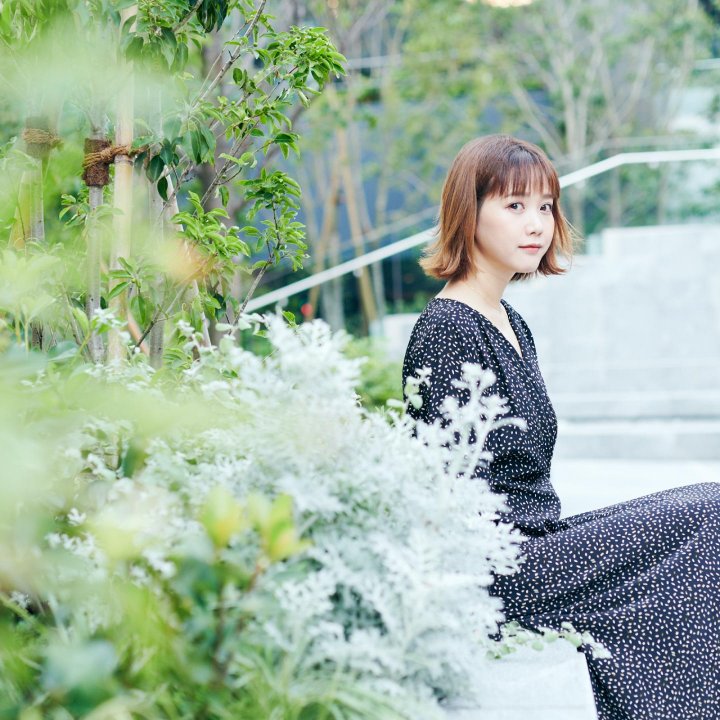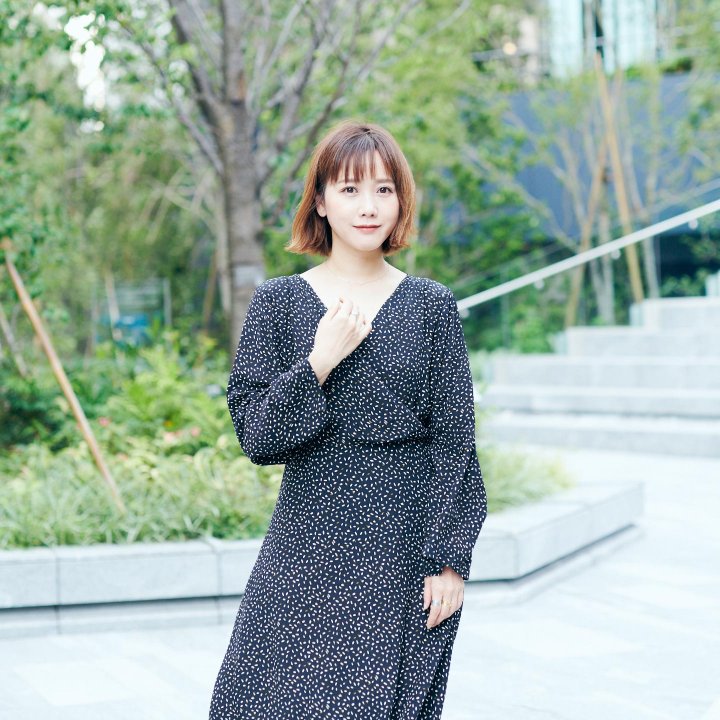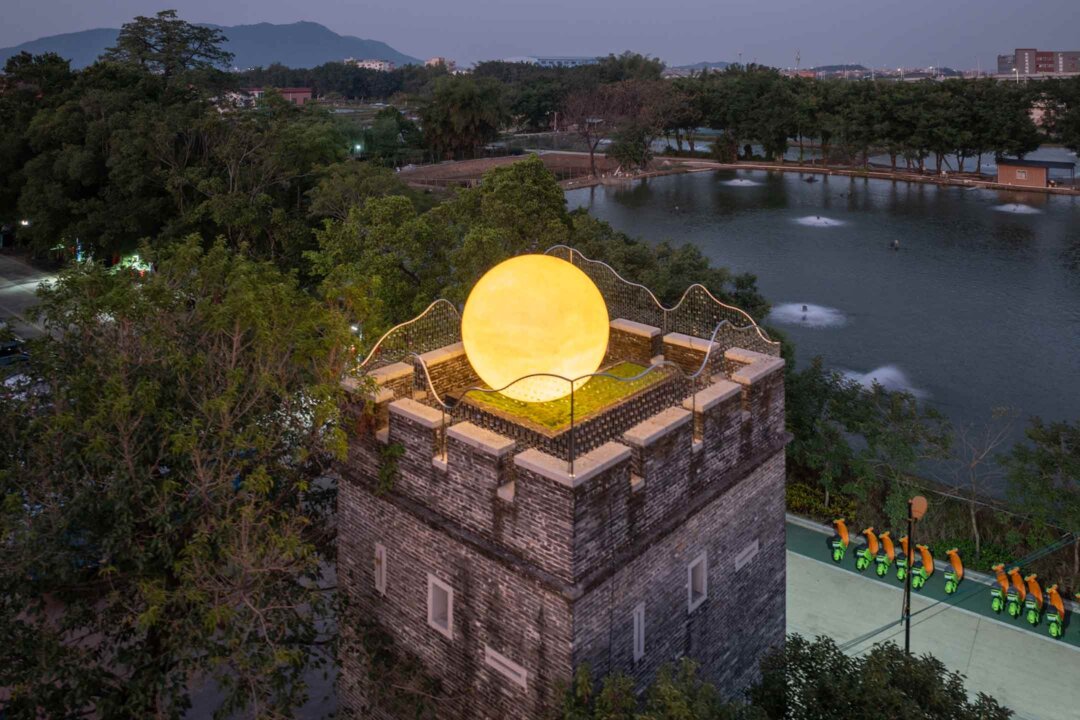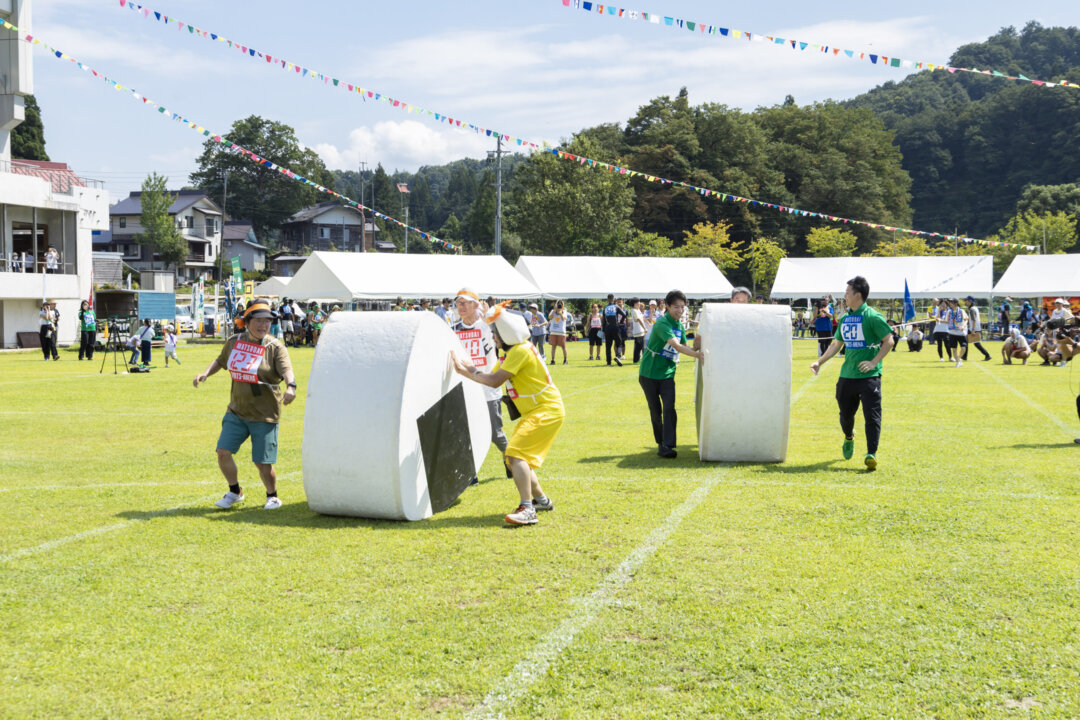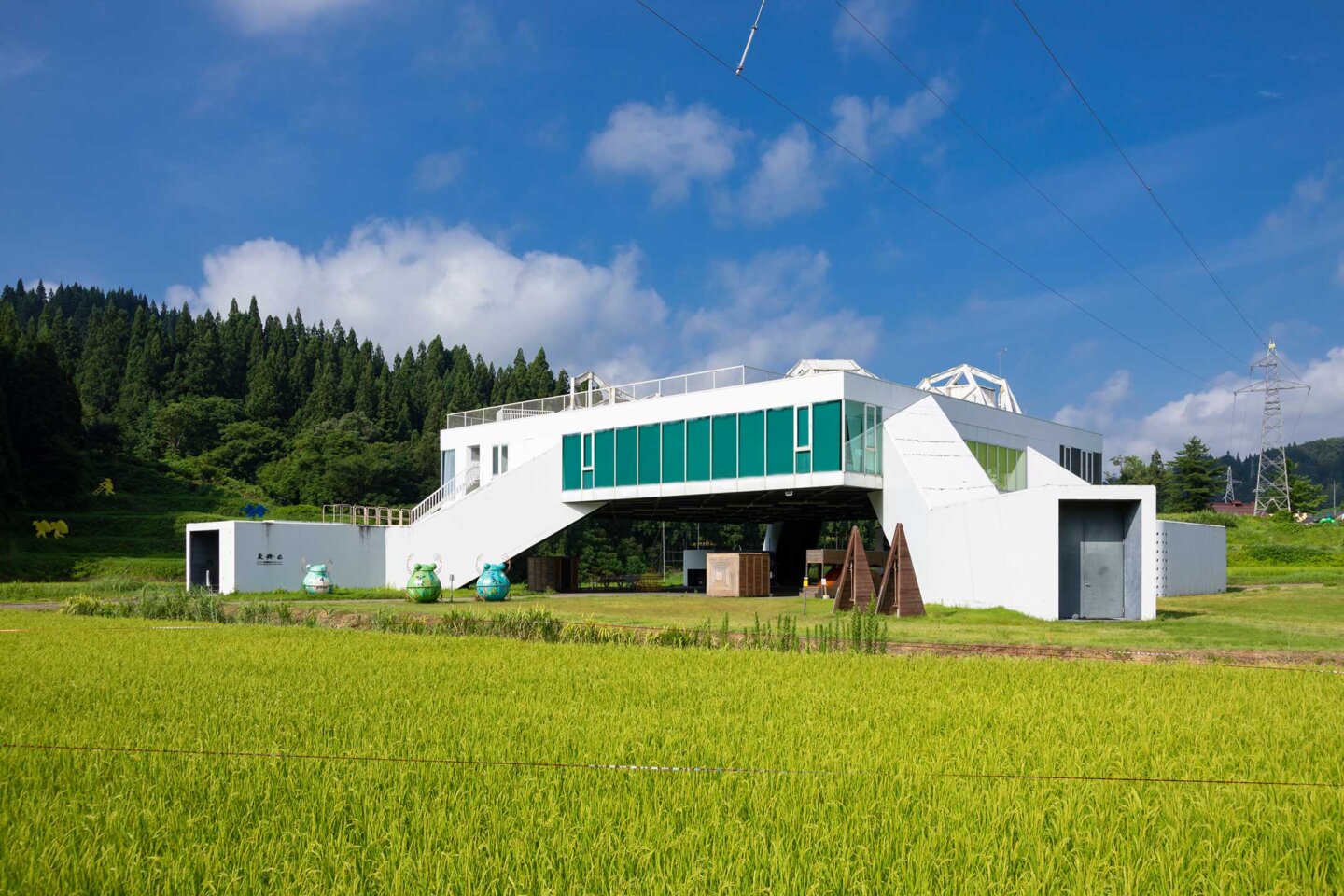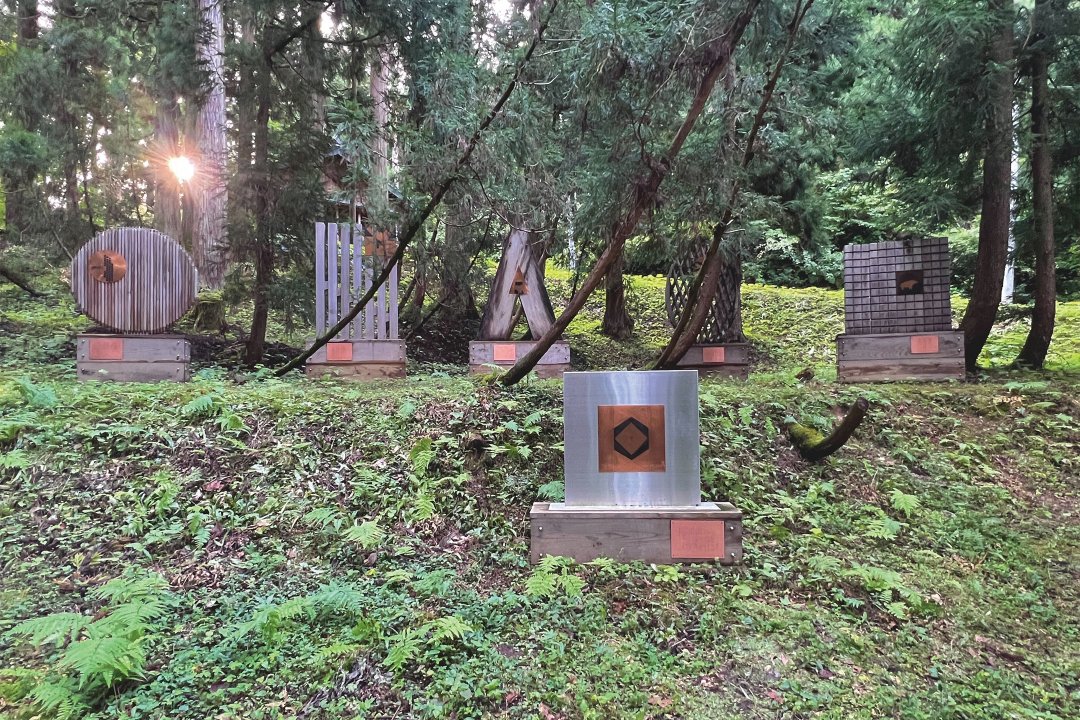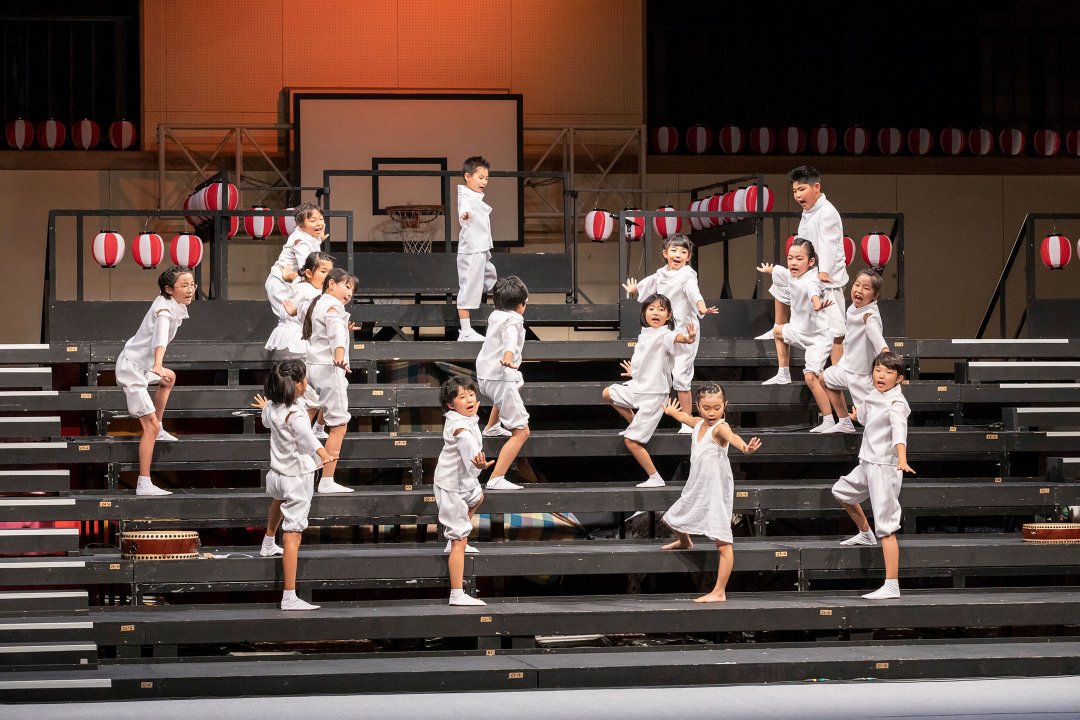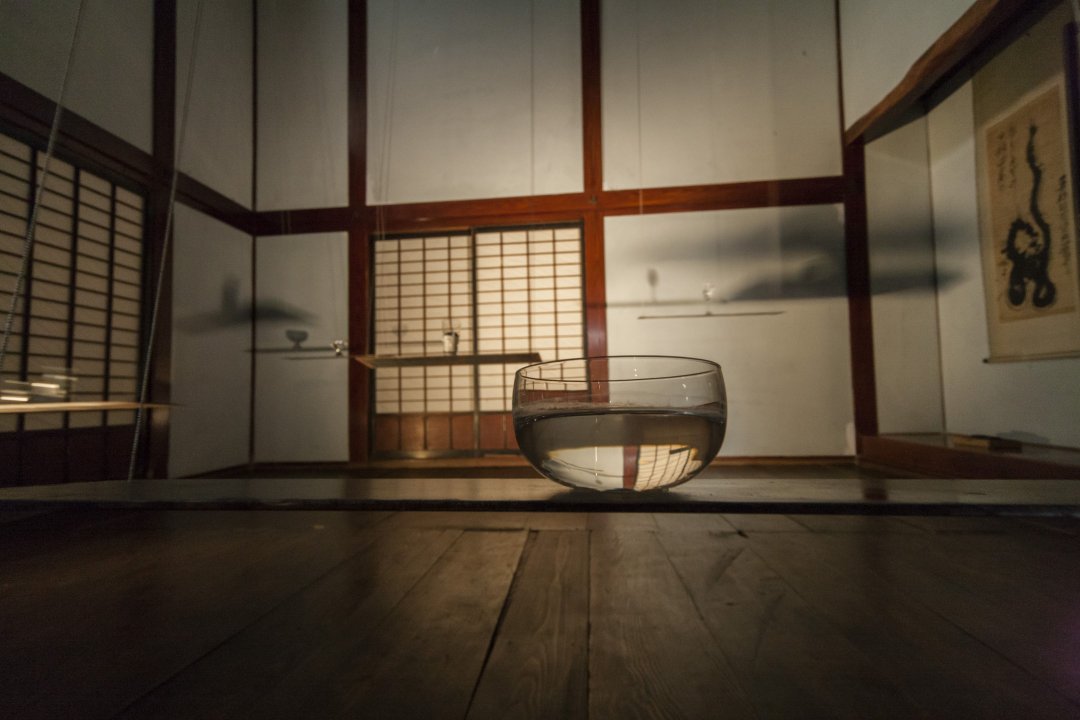Thinking 21st century art in the world from Niigata
Echigo-Tsumari Art Field - Official Web Magazine
Story / ME AND THE ECHIGO-TSUMARI ART TRIENNALE, vol.2-1
The secret story of the birth of “Ubusuna House” – magical coincidence of Chuetsu Earthquake and ETAT
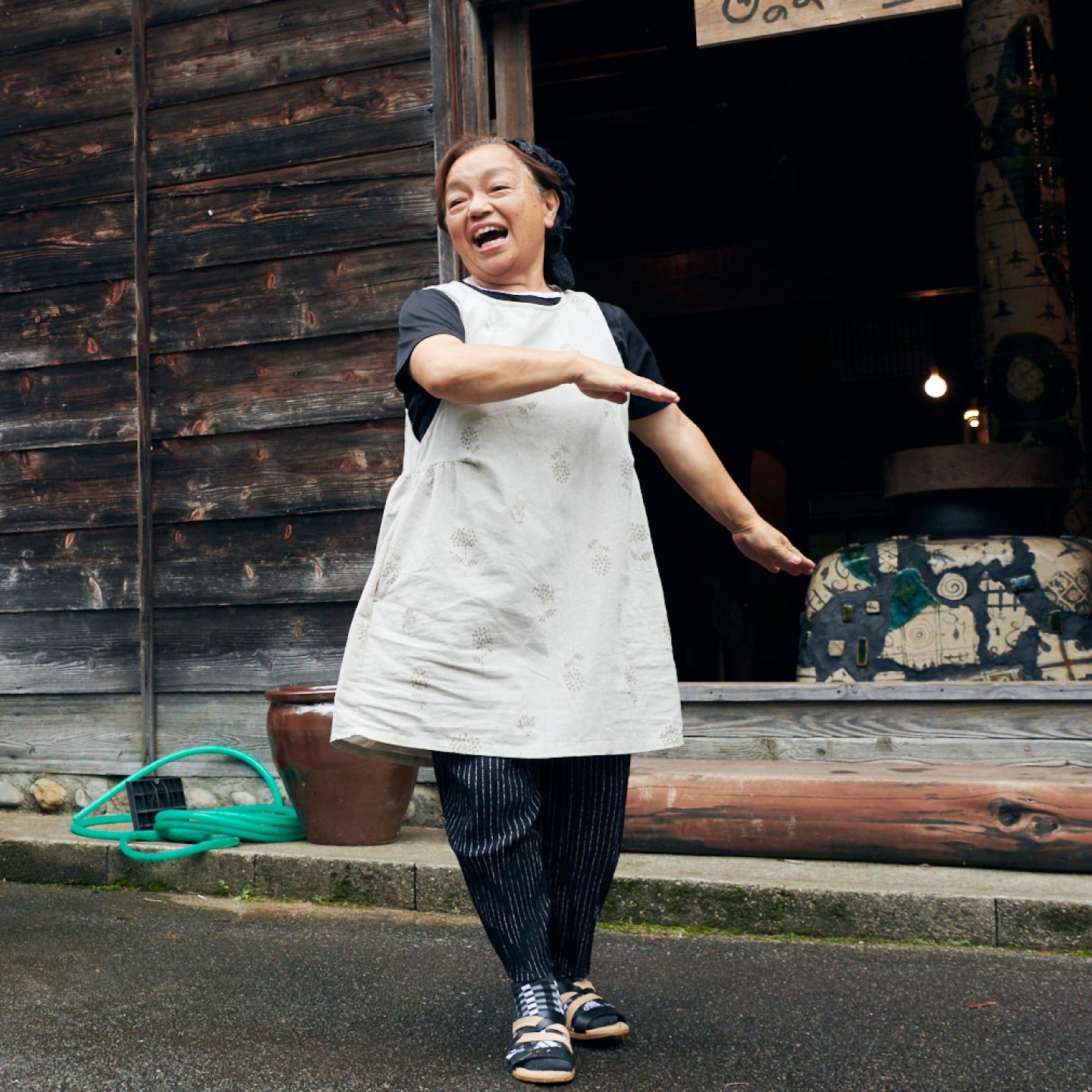
staff member of Ubusuna House
Matsuno Komiyama
A series of articles featuring voices of various supporters of ETAT introduce Matsuno Komiyama, one of the must-meet staff members working at Ubusuna House in Tokamachi-city. Female villagers manage the restaurant which serves local delicacies at the old minka house which has been teransformed into a gallery space for various potteries by master potters across Japan. Matsuno has been one of the core members since the launch of the Ubusuna House in 2006. Here we asked her about the history and story of the house.
Text Haruya Nakajima, Photo Nozomu Toyoshima, Editor Shinichi Uchida, Tomoyuki Miyahara (CINRA.NET editorial team)
What is ETAT to you?
“A treasure in my heart” which I expand through meeting with people
05 November 2019
Behind the scene of the birth of “Ubusuna House”
“Ubusuna House” opened in 2006 (Photo by Kazue Kawase)
“Ubusuna House” is the theated roof house built in 1924 that was revitalised by “potteries” and “food”. The house is not only fitted with a Kamado (cooking stove), basin, bath tab created by potters but also presents potteries everywhere. What makes it most unique is a restaurant where visitors can taste food using local ingridients being served in crockeris created by potters. Matsuno Komiyama is one of the staff members who is admired for her friendly smile and cheerful chat.
“Ubusuna House” was established in 2006 and what prompted Matsuno to engage with its activities was the Niigata Chuetsu Earthquake which hit the region in 2004, two years before the establishment.

Back in 2000 when the festival was launched, people in each village were more or less skeptical of the project. While people met each other in the community for PTA (Parents and Teachers Association) activities, there was not “reagionality”. The Chuetsu Earthquake hit us then. Shizuko Mizouchi, who has become a driving force of running “Ubusuna House” was the person who showed her leadership under such circumastances.
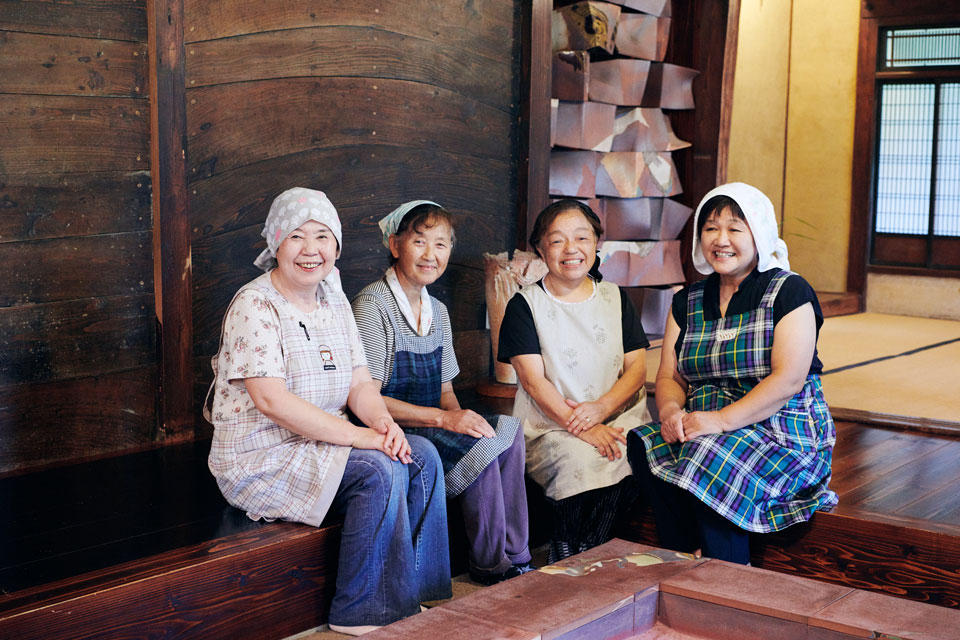
Staff members of “Ubusuna House”. From left to right, Michiko Shimizu (who appeared in “Strength in Locality and Tradition by Yuta Orisaka”, Hisako Mizouchi, Matsuno Komiyama and Shizuko Mizouchi.
The community spirit was formed amongst people supporting one another to survive the challenging conditions as they shared meals and slept together in the evacuation centre.
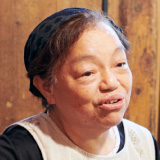
Evernone in the village was made realise that it was possible to live in a place like the evacuation centre for more than a couple of nights if you support each other. The conversation of revitalising and making use of the old minka hous was affected by the quake and going to be demorished began after such experience. Such project came to realised in reality and “Ubusuna House” was launched from the third itteration of the festival in 2006.
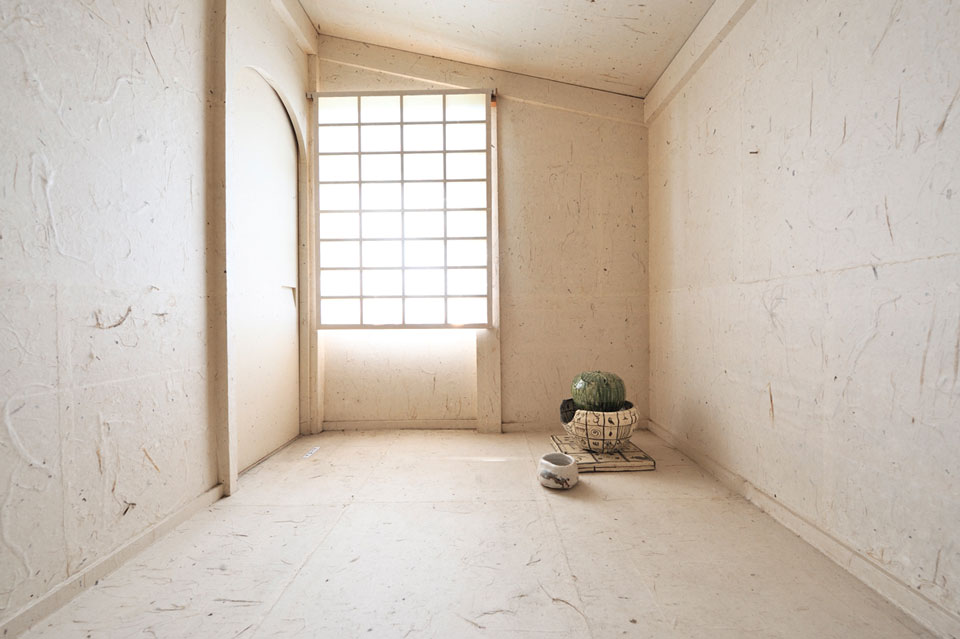
“Tea Room of light (photo)” as well as “Tea Room of Darkness” and “Tea Room of Wind” on the above floor present unique potteries. (Photo courtesy of ETAT).
The earth quacke which nobody wished to see happen met the art festival which was launched several years by then. The coincidental combination of “accident and ceremony” prompted to strengthen the community bond. Ubusuna is written “birth earth” in Kanji (Chinese characters). It is one of the eight million gods who protects the land. The name “Ubusuna House” was given to this place where potteries made by five unique potters (Kiyoshi Sawa, Goro Suzuki, Takuo Nakamura, Mizushiro Yoshikawa and Ryotaro Kato) were displayed and local food was served with warm hospitality.
“Alternative flavour” which becomes local and sprouts
The first thing Komiyama and her team worked on was to create alternative menu which was distinctive to the region.
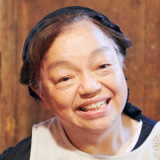
We started to contemplating an idea of making unique food using Sansai (mountain vegetables) being picked up locally. People were already familiar and always cooked Sansai then but they became unpopular as other vegetables became available at the supermarket. We decided to learn about local cuisine and improve it as we launched “Ubusuna House”. While I am not an expert of local history nor pottery, I am pretty good at cooking.
Since then they met number of times and tried different dishes. “Sansai humberg” and “sansai gyoza” were the outcomes of countless meetings and trials.

“Sansai Gyoza” was one of the first original menu (Photo coutery of ETAT)
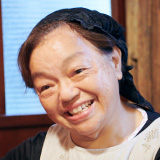
The humberg and gyoza you couldn’t find elswhere across Japan except here. I can’t forget the sense of joy I felt when we finally completed the process. My brain was always occupied as I have wondered“what about this dish” or “if we could serve another dish” everyday.
“What a joy! I felt very proud.”Matsuno, who smiles as she speaks loves meeting with people.
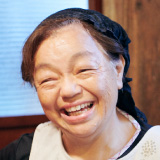
“When we finally opened and welcomed guests, I was so excited and happy. That is what we would call “being excited”. I couldn’t go to sleep as I imagined what kind of day I would have on the following day after returning home and I even had to walk around the house to calm myself down.
Draming performance by Seppuku Pistols in front of “Ubusuna House” (2018). The photo captured Matsuno and others started dancing to the music.
When we asked what drives her to welcome peple with cheerful smiles for more than ten years, she told us it was because she was optimistic. She is like a chatter box or broken radio without a switch, she smiled.

If I tried to copy what visitors from other countries might say, for example,”Ni-hao” or “shei shei”, they respond – so I get closer to them and ask “would you like to have a large bowl of rice?” by using body language. I can’t contain myself for joy when I felt that I was able to make myself understood. I love such exchange. This place is a real asset. For myself, I can meet people as I work here. Because this place offers both, I can bring my happiness to visitors everyday.
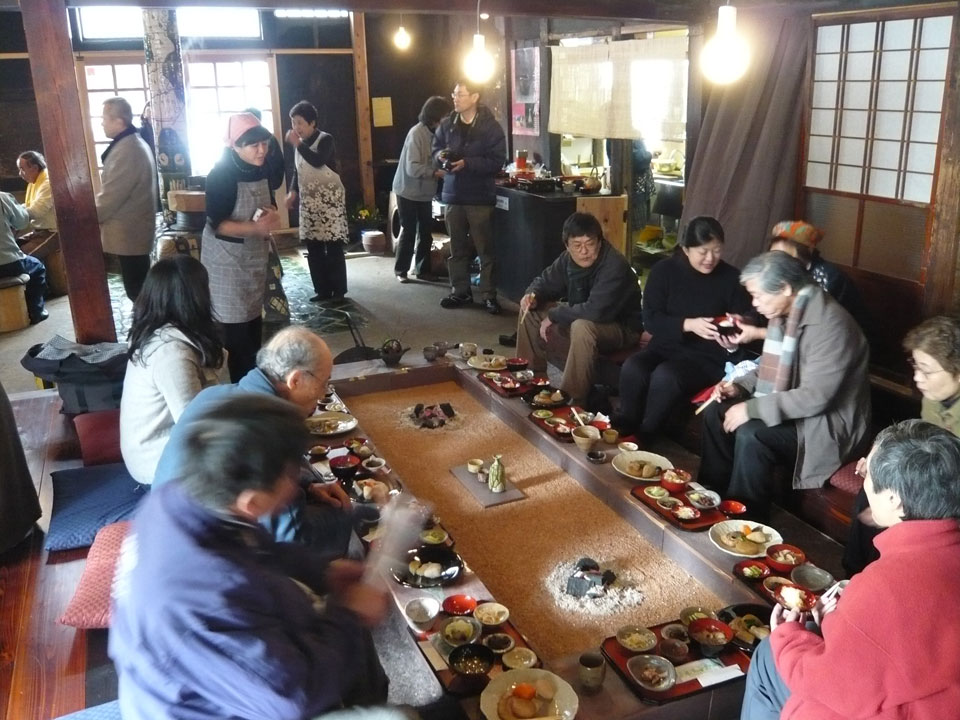
Visitors from both within and outside Japan visit here to enjoy local food as they appreciate different seasons in Echigo-Tsumari.
The work place where she can meet various people while living in the village she is familiar with. The job of welcoming people at Ubusuna House must be a vocation. In the following article, we will ask how their everyday life in Echigo-Tsumari relate to the festival.
< Continue to Sequel >
Matsuno Komiyama ( Sequel )
Mountain bounties of“Ubusuna House” are food, pottery and people






